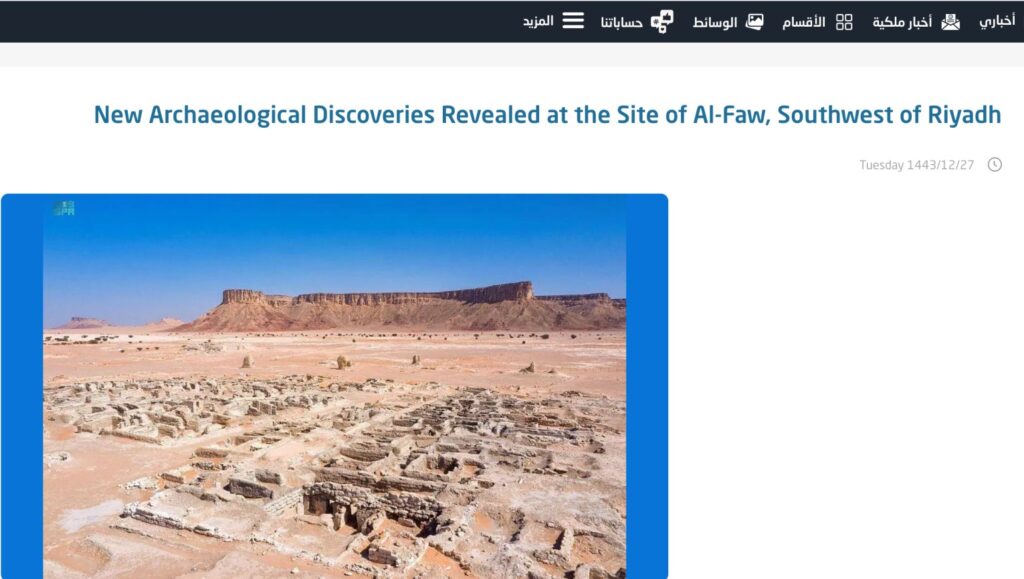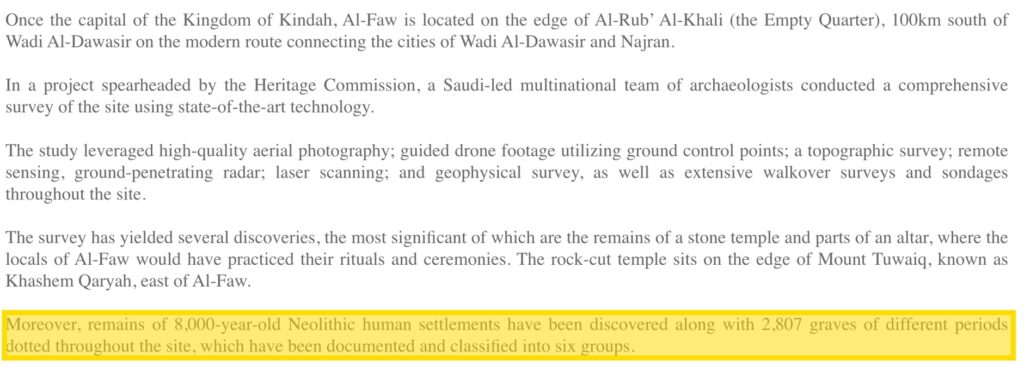A video going viral on social media (here, here, and here) claims that remains of an 8,000-year-old Sanatan Dharma temple and civilization have been discovered in Saudi Arabia. Let’s verify the authenticity of this claim in this article.

Claim: Remains of an 8,000-Year-Old Sanatan Dharma Temple and Civilization Found in Saudi Arabia.
Fact: The Saudi Heritage Commission report does not link the temple to Hinduism. During a July 2022 excavation at Al-Faw on Mount Tuwaiq in southwest Saudi Arabia, the Commission uncovered an 8,000-year-old stone temple and altar, shedding light on the daily lives of nomadic tribes. The site also revealed Neolithic human settlements and 2,807 graves from various periods, offering insights into ancient burial practices. Inscriptions dedicated to the local god Kahal suggest the temple was central to the region’s religious practices, serving both locals and passing traders. Hence, the claim made in the post is MISLEADING.
A Google keyword search led us to several reports (here, here, and here) about this excavation & discovery. According to these reports, the Saudi Heritage Commission uncovered an 8,000-year-old stone temple pieces of an altar at Al-Faw on Mount Tuwaiq in southwest Saudi Arabia during a July 2022 excavation. This discovery offers experts insight into the daily lives of nomadic tribes in ancient Arabia. The dig, led by a multinational team of Saudi and French archaeologists, took place at Al-Faw, the site of the former capital of the Kingdom of Kindah. The team used advanced methods such as aerial photography, laser scans, ground-penetrating radar, and topographic and geophysical surveys to explore the site.

The excavation at Al-Faw also discovered 8,000-year-old Neolithic human settlements along with 2,807 graves from different periods, providing insights into ancient burial practices and daily life.

Remains of large buildings, likely used by traders, and an advanced irrigation system for desert farming were also uncovered, along with rock art depicting everyday scenes.

The stone-carved temple, used for religious rituals by the people of Al-Faw, is not linked to Hinduism but reflects the spiritual life of the community thousands of years ago. Inscriptions dedicated to the local god Kahal indicate the temple was central to the region’s religious practices, likely serving both locals and passing traders. The Al-Faw Archaeological Area is also categorized as a World Heritage Site by UNESCO.

To sum up, the Saudi Heritage Commission report does not link the temple to Hinduism but associates it with the local belief system of Al-Faw’s inhabitants.



